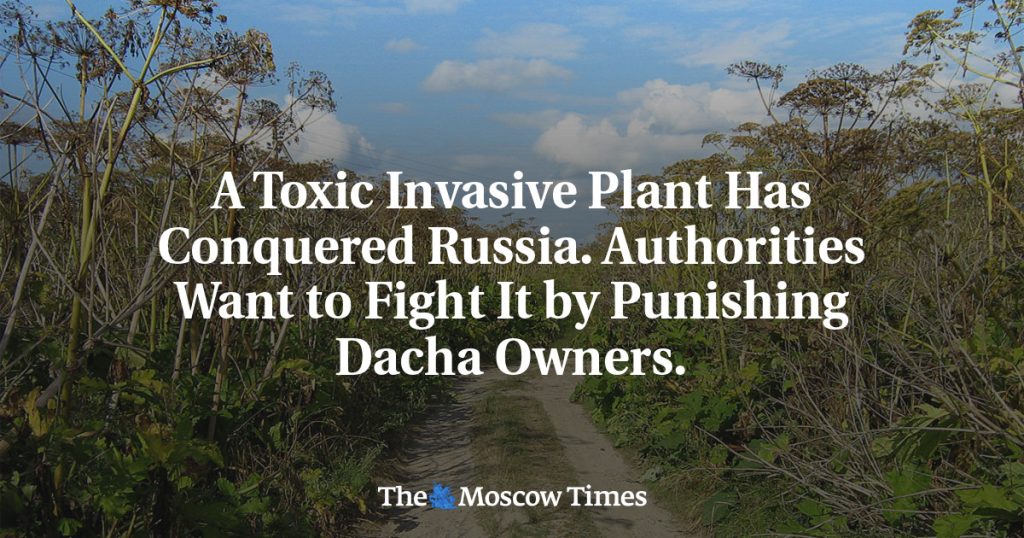In Russia, the spread of Sosnovsky’s hogweed, a toxic and invasive plant species, has become a major concern for landowners. The plant can grow up to five meters in height, causing havoc on ecosystems and leading to thousands of hospital visits each year. The toxic sap of hogweed can cause third-degree burns when exposed to sunlight and even blindness, with severe burns proving fatal. As hogweed dominates up to 15% of natural landscapes in European Russia, efforts are being made to combat its spread, including a proposed bill that would impose hefty fines on individuals who fail to clear the plant from their properties.
Experts estimate that hogweed has spread across approximately one million hectares in Russia, presenting a significant challenge for landowners. The new law imposing fines on those who do not eliminate the plant may face challenges in implementation, as hogweed grows practically everywhere and fining everyone will be impossible. The plant’s proliferation is largely found in abandoned agricultural lands, rendering them unprofitable for cultivation after the collapse of the Soviet Union. Current regulations and restrictions have hindered reforestation efforts that could help address the hogweed problem, leading to a potential increase in unusable farmlands in Russia.
The introduction of Sosnovsky’s hogweed to the Soviet Union following World War II as a high-yielding foraging crop led to its widespread domination across the country. Despite concerns about its safety, hogweed continued to spread uncontrollably, displacing native species and threatening biodiversity. The plant has become a part of Russian pop culture, featured in various media, including popular TV series, computer games, and rock songs. However, efforts by activists and grassroots groups to combat hogweed remain challenging, as many struggle to identify the plant and understand its threats to nature.
As the spread of hogweed continues, there is a growing concern about its impact on biodiversity and the environment. Activist groups refer to the plant’s proliferation as a “slowly unfolding environmental catastrophe,” as its consequences may not be immediately apparent. With three-quarters of Russia’s population living in urban areas, there may be fewer people available to combat hogweed’s spread in the future. Government-led awareness campaigns are seen as crucial in raising public awareness about the threats posed by invasive species like hogweed and the need for comprehensive state programs, funding, and public support to combat their spread effectively.
The fight against Sosnovsky’s hogweed remains complex and costly, requiring more attention than just imposing fines on individuals. Skoltech researchers have warned that climate change may further enable the plant to expand its habitat, potentially engulfing almost all of European Russia by 2050. With traditional indigenous livelihoods already impacted by the plant’s spread beyond the Arctic Circle, the need for comprehensive state programs, public awareness efforts, and support measures from the government is crucial in addressing the hogweed problem. Without significant measures in place, the issue will continue to worsen, posing a threat to ecosystems and public health in Russia.


